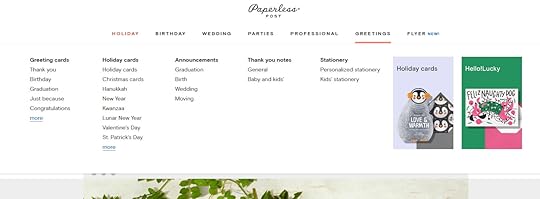Amy C. Fitzjohn's Blog, page 13
February 6, 2020
The World’s Most Famous Libraries From The Past and Present

As a child, I have many memories of libraries.
My dad has been researching our family tree for as long as I can remember, and before the internet, (yes, I’m that old!) research involved going to the library.
Dad would be looking through microfiches of old newspaper records, obituaries, news stories and birth announcements for any mention of the Fitzjohn’s, so he could not only track our family and heritage but bring those characters to life. And I’d be getting lost in a book in some dusty corner of the library. Although I rarely go into libraries these days, I still have a special affinity for these places of complete equality, where anyone can walk in, for free, borrow any book they like or simply stay there and just read.
This is a great infographic from a contributor of…
The World’ Most Famous Libraries: Now and Then
Is there anywhere in a community that’s more culturally and socially important than a library? They bring so much, and ask for so little in return. They are places where communities can come together, where connections can be made, where people can take steps along the journey of self-improvement, and where people can enlighten their minds and understand more when they leave than they did when they arrived.
And it’s not just today or in the recent past when libraries have been so important. The earliest such building dates back all the way back to the 7th century before the birth of Christ. Alas, it’s no longer standing — how cool would it be to explore that building? Even if you couldn’t understand anything that was written in the books, it’d just be enjoyable to be in the first building dedicated to books and the pursuit of knowledge.
Not that you need to look back in history to find historically important libraries. There are important libraries standing right now, all across the world. One such example is The British Library, which is in London. It’s home to many literary treasures and important documents from history. Others include the Library of Congress, which is the largest library in the home, home to millions of books. For visually impressive libraries, there’s the Admont Library in Austria.
To learn more about these libraries and others from around the world, take a look at the infographic below, which was produced by the University of Southern California.

Infographic Design By University of Southern California
For instant updates when I publish a new blog post, Follow me on Bloglovin’
For extra goodies and exclusive new information, join my mailing list HERE.
The post The World’s Most Famous Libraries From The Past and Present appeared first on Amy Morse.
The World’ Most Famous Libraries

As a child, I have many memories of libraries.
My dad has been researching our family tree for as long as I can remember, and before the internet, (yes, I’m that old!) research involved going to the library.
Dad would be looking through microfiches of old newspaper records, obituaries, news stories and birth announcements for any mention of the Fitzjohn’s, so he could not only track our family and heritage but bring those characters to life. And I’d be getting lost in a book in some dusty corner of the library. Although I rarely go into libraries these days, I still have a special affinity for these places of complete equality, where anyone can walk in, for free, borrow any book they like or simply stay there and just read.
This is a great infographic from a contributor of…
The World’ Most Famous Libraries
Is there anywhere in a community that’s more culturally and socially important than a library? They bring so much, and ask for so little in return. They are places where communities can come together, where connections can be made, where people can take steps along the journey of self-improvement, and where people can enlighten their minds and understand more when they leave than they did when they arrived.
And it’s not just today or in the recent past when libraries have been so important. The earliest such building dates back all the way back to the 7th century before the birth of Christ. Alas, it’s no longer standing — how cool would it be to explore that building? Even if you couldn’t understand anything that was written in the books, it’d just be enjoyable to be in the first building dedicated to books and the pursuit of knowledge.
Not that you need to look back in history to find historically important libraries. There are important libraries standing right now, all across the world. One such example is The British Library, which is in London. It’s home to many literary treasures and important documents from history. Others include the Library of Congress, which is the largest library in the home, home to millions of books. For visually impressive libraries, there’s the Admont Library in Austria.
To learn more about these libraries and others from around the world, take a look at the infographic below, which was produced by the University of Southern California.

Infographic Design By University of Southern California
For instant updates when I publish a new blog post, Follow me on Bloglovin’
For extra goodies and exclusive new information, join my mailing list HERE.
The post The World’ Most Famous Libraries appeared first on Amy Morse.
February 4, 2020
10 Social Media Tools to Help You Write Better Posts
Featuring another contributor, sharing a few useful tools to help write better posts.
10 Social Media Tools to Help You Write Better Posts
Staying on top of everything in today’s digital-first world as a marketer can be a challenge because your list of responsibilities keeps growing. From advertising to customer experience, you have to ensure your clients get value for their money. Luckily for you, there is a wide selection of tools that make your work easier.
Social media writing tools ensure you write content that targets the right audience. These tools not only ensure you write creative and unique content, but they also help you stay productive as a social media marketer. Content curation, scheduling, analysis, and publishing can be difficult if you don’t have tools to keep in check.
With the right set of tools, you can make sure you enhance your effectiveness. Most social media marketers don’t realize how essential it is to proofread a post before publishing it. With the right editing tools, you can be assured that all your posts will be void of grammatical errors.
Content writing jobs are demanding because clients want articles that get the attention of the reader. Once you succeed in getting the attention of the ideal audience, you don’t want to lose them because you failed to edit your posts.
Here are ten social media tools you should utilize in your daily workflows to help you improve results across the board.

1. Ulysses
Ulysses is the perfect tool for any social media marketer with a busy schedule. This application helps you keep all distractions at bay. Any freelancer knows how much time they can waste when they pay attention to distractions.
If you need to focus on writing expressly, this application boosts your productivity. It is a user-friendly tool that is compatible with Mac devices, iPads, and iPhones. You can easily access articles you wrote on your smartphone using your laptop when you synchronize applications.
Aside from keeping you on track, Ulysses also helps you organize all your files. As you know, staying organized boosts brain activity. You can easily finish projects in the shortest time possible because your brain is always on overdrive.
The best thing is, you can export your articles to PDF or word or even to a client’s WordPress website once you’re done.
2. After the Deadline
Proofreading is a drag for many content creators because you can go through an article so many times but still fail to catch so many errors. Sometimes, you’re too tired to proofread an article. Well, After the Deadline (AtD) is never too tired to catch grammar and spelling mistakes. This is a web plug-in that you can also use to polish social media posts. It can also be used as a Google Chrome extension.
Aside from grammatical errors, AtD also helps you rectify sentence structure and your style of writing. The best part is that this tool has a color-coding scheme that helps you know what type of error has been highlighted.
3. Grammar Guide
Grammar matters in social media posts more than most social media marketers know. You don’t want people to flinch when they read your article because it’s filled with grammatical errors.
When your articles have good grammar, the reading audience has an easy time following your ideas. If your grammar is not at its best, consider using Grammar Guide. This is a writing tool that guides on how to improve your grammar. Grammar Guide debunks all grammar myths you might have heard of.
4. 1 Checker
1 Checker helps you rectify all grammar and spelling errors as you write. It is a Microsoft Word add-on that allows you to correct errors as soon as you make them. You save yourself the hassle of copying and pasting documents to web browsers.
Aside from integrating it into Microsoft Word, you can also add one checker directly to a social media site. This tool is far more thorough than Microsoft Word.
5. Writefull
Every content creator has been in a situation where they can’t remember the adjective they want to use. It’s not always easy to get the appropriate combination of words to use in your writing. Writefull helps you remember the word you were eyeing by providing you with suggestions suitable for every context.
The application goes through the comprehensive online database to help you find phrases commonly used in a given context. This tool is unlike any other because it goes beyond spelling and grammar.
6. Easy Word Count
Since you won’t always be using Microsoft Word to create content, keeping up with your articles’ word count can be a challenge. Easy Word Count ensures you always keep track of the word count. The length of articles plays a significant role in SEO friendliness.
Each time a client gives an assignment, you notice that they always specify the word count. This tool ensures that you deliver as per the client’s specifications.
7. Plagiarism Checker
As a professional content creator, the last thing you want is to be accused of plagiarism. Even though there are those who intentionally lift other people’s work, you can accidentally forget to paraphrases a paragraph or two. Plagiarism Checker ensures that you pick up on your mistakes before it is too late.
The beauty of research is it informs your writing. It’s possible to be influenced by pieces you find online without necessarily copying them word for word.
8. Writerack
This is a suitable writing tool for Twitter posts. Writerack helps you condense your thoughts and come up with a 140-word post.
With this tool, you can easily split your ideas into tweetable chunks.
9. ByWord 2
Every writer should have a tool that allows them to harness all the ideas that randomly hit them throughout the day. ByWord 2 is the told designed for just that.
10.Language Tool
Many social media writing tools limit you to only one language. That’s why you need a language tool to ensure your article has consistent language throughout.
Conclusion
These are ten effective tools that ensure your social media posts deliver your ideal audience on your lap. Every content creator needs a set of tools that helps them boost their productivity.
The post 10 Social Media Tools to Help You Write Better Posts appeared first on Amy Morse.
January 16, 2020
The Monthly Creativity Challenge

It’s that time of year again where we look ahead, then set goals and intentions.
When you work for yourself, it’s easy to make those intentions all about the business. However, when you are at the heart of that business, you need to look after you, too!
I attended the Business Summit, hosted by Linda-Davies Carr, The Master Fixer recently and one takeaway from it was, ‘work more on yourself than your business’ – for just that reason. Grow yourself and you will have the capacity and capability to grow your business.

But working on yourself goes beyond learning new business skills.
What other parts of you, which versions of you, also need work?
‘Creative Amy’ gets a regular look-in, but ‘Artistic Amy’ – not so much.
I often hear people tell me they are not creative. I don’t believe that. I believe that all humans are inherently creative, it’s a fundamental part of our humanity, down to our DNA, because creativity is just problem-solving in action.
The confusion comes when being ‘artistic’ is viewed as being ‘creative’. Our education system like to put things into ‘subject boxes’ so they fit neatly into an academic timetable. There are the science and maths subjects, then the arty subjects. It conditions us to view things as creative or non-creative, which, frankly, is nonsense!
Even scientist must first use their imagination to interpret information in order to ‘create’ a theory, then test it through ‘creating’ experiments.
Being artistic is ONE expression of creativity. Whether you can paint, draw, play music, write creatively…
But we are all creative in so many other ways.
It may be that you have a knack for seeing patterns in data that tell a story.
Or you are fascinated by how things work so can construct and deconstruct something.
Or you can cobble together a feast from a few sweaty leftovers.
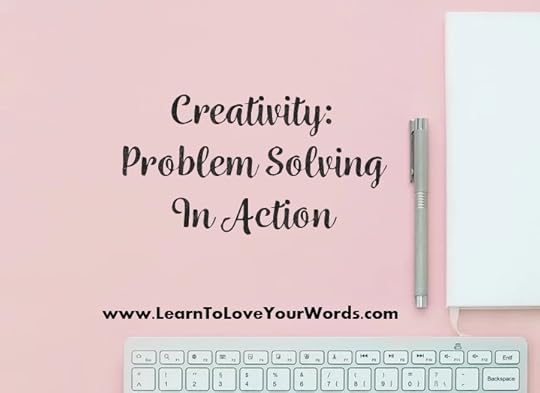
Long-Lost Creativity
My Christmas started the week before everything shuts for festivities – no one wants business training or writing mentoring the week after an election and the week before Christmas!
I spent the time making hampers as gifts, and I loved it.
I loved making the hampers and miscellaneous bits for them. It was lovely getting creative by repurposing things as boxes, bags and baskets.
I cut up pairs of old jeans for bags, wove some of my mindful doodles into baskets and pottered around charity shops looking for nic-nacks to upcycle. Bedminster, the district of Bristol where I live, is well-populated with a wide variety of great little bric-a-brac and charity shops.
It made me realise that I miss this side of being creative.
Since the demise of Tom Cat Designs – my first side hustle business – after doing a book art 365 project a few years back, I’ve not done much art and craft, my creativity has always been written.
Seeing my sister at Christmas also inspired me. As an artist, she has examples all over her house of arts and craft projects she’s created.
New Intentions
One of my personal goals for 2020 is to try a different craft every month.
I’d like to learn some new skills, produce some lovely things for the home and as gifts – maybe even sell them.
I’ve started a new category on my blog, resurrected my Instagram account and set up Pinterest boards for inspiration.
Not Just About Work
I realise that arts and craft aren’t necessarily in keeping with my work as a business advisor, mentor and trainer, but it does fit with my business values of creativity and freedom.
It shouldn’t always be about work.
As a self-employed person, it’s easy to let your business take over your life and fill your time being ‘busy’.
But for many of us, we chose the self-employed route for a better work-life balance, so why deplete yourself in the same way an employer would?
Being creative in other areas of your life awakens parts of you that may never surface otherwise.
This is an important part of your own self-development.
Crafty Experiments
There are so many things I’d like to learn and try. I’d like to document the process and share it, so look out for some Random Acts Of Creativity on the blog and across my Social Feeds!
Here are just a few of my ideas so far, which I’m sure will grow and evolve over the course of the year:
Dressmaking
I fell in love with a dress from WhiteStuff. It’s a great shape for me, it’s flattering, it’s comfortable, it even has pockets! I’m going to turn it inside out, copy the pattern, get some fabric and have a go at re-creating it.
Needle Felting
Learn to needle felt then make cute little felted animals as gifts and to display at home
Crochet
I can knit, but I’ve never crocheted. It’s something I’d like to learn
Embroidery and Criss Stitch
I’ve seen some gorgeous examples of people printing images into fabric then embroidering in the detail
Pottery
At Christmas, my dad talked about how he’d like to have a go on a potter’s wheel. I’ve never done this either. It’s his birthday this month so as a gift I said I’d find somewhere we could have a go.
Paper Cutting
I’ve seen some lovely silhouettes and 3D images from delicately cut paper
What else do you think I should try? What’s your go-to craft?
For instant updates when I publish a new blog post, Follow me on Bloglovin’
For extra goodies and exclusive new information, join my mailing list HERE.
The post The Monthly Creativity Challenge appeared first on Amy Morse.
December 22, 2019
Why Your WordPress Site Is So Slow (And What To Do About It)
I’m not a web designer, but I do like using WordPress for my blog. I’m happy to host a contributor with some quick tips to speed up your WordPress website, I’ll be trying these out myself!
Why Your WordPress Site Is So Slow (And What To Do About It)
If you want to attract customers online and build a successful brand, you need a fast site. Unfortunately, even some WordPress websites can be grindingly slow, forcing you to miss out on business and reducing your competitiveness.
These are not idle claims. Research shows that businesses whose websites take longer than two seconds to load lose around 47 percent of their users, missing out on opportunities to sell. What’s more, Google and other search engines now punish slow-loading sites, so you must avoid them at all costs.
Here are some of the reasons why your WordPress site is slow and what to do about it.
You’re Not Using A Lightweight Framework

WordPress, like many web builders, comes with the option of running a “lightweight framework.” The idea here is to reduce the amount of information that the site must transfer to the user. The less than the user must download, the faster the site will load, irrespective of the speed of their internet connection or your server.
There are costs, of course. Obviously, you won’t benefit from some of the shinier themes available on the platform. In general, though, a fast-loading minimalist design is much better than a slow-loading site with all the bells and whistles.
You’re Not Using Content Delivery Networks
Content delivery networks, sometimes called CDNs, help to speed up page loading times. Instead of relying on a single server to distribute data to your users, CDNs use multiple servers in tandem. Each server sends a packet of information to the user’s device, constructing your site like a patchwork, helping the whole ensemble to come together much more quickly.
CDNs are pretty smart. When they know the location of the user, they’ll use the nearest server to allow packets of information to transfer more rapidly. Remember, you don’t have to install a CDN yourself: third-party providers can operate the service for you.
You’re Using Too Many Plug-Ins
One of the most critical WordPress web design principles is to limit the number of plug-ins that you use. While they can be beneficial, they can also slow your site down enormously.
Where possible, use IFTTT or Zapier to automate tasks and reduce your reliance on data-heavy third-party solutions.
You’ve Enabled Pingback And Trackbacks

WordPress includes both pingback and trackback features that tell you whenever one of your pages or blogs receives a link. In principle, it sounds like a good idea (because it allows you disavow illegitimate links), but in practice, it can slow your site down by putting too much strain on your servers.
You’ve Neglected To Clean Up Your WordPress Database
Every day, your website attracts fake users, spam comments, and, sometimes, malware. A lot of this information goes straight to your WordPress database, a storage area for all your files and folders. Cleaning this up can provide more space for your WordPress web files, helping to create a more seamless user experience.
The bottom line is this: you don’t have to put up with a slow WordPress site.
The post Why Your WordPress Site Is So Slow (And What To Do About It) appeared first on Amy Morse.
December 17, 2019
Lessons From Another Year in Business

I have a memory of a school Parent’s Evening.
As a sometime teacher’s pet, my innate need to please made me a bit of a suck-up, constantly seeking approval. I was often the first with a hand up in class – Hermione, but without the grades!
As B grade average student in every subject, I didn’t shine at anything, but, as a lover of books and writing, I had an affinity for English.
During this particular Parent’s Evening, I reddened with embarrassment when dad commented to the English teacher that,
“Amy is a bugger for never asking for help. She thinks she can just do it all herself and is too proud to admit when she can’t. I know she’s an A grade in English, she just needs to get over herself.”
At 15, I was mortified for being called out for my own shit by my dad, of all people – ‘what did he know, he was just boring old dad, he didn’t really know me?’
He did though!
Beyond my teenage bravado and hormone-fuelled ego, deep down, I knew he had me pegged! Smart man (and perceptive), my dad!
Times Change
Being almost triple that age now, and you would have thought I’d have learned those lessons!
I’m getting better. I have never been one of those people who always has to be right – I know a lot of the time I’m not. But I do have a certain stubborn pride, I hate admitting defeat and sometimes that means I don’t ask for help when I need it.
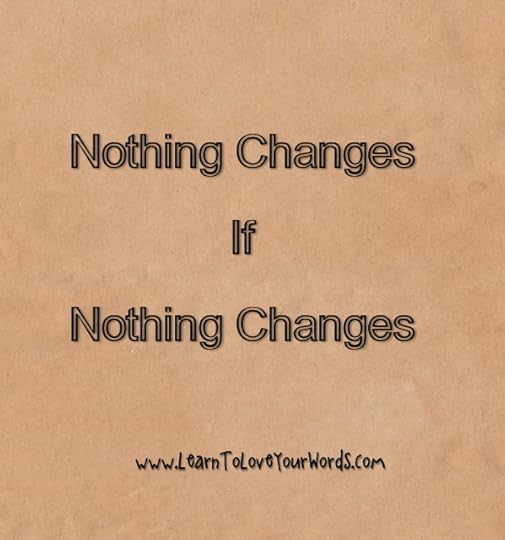
Admitting Vulnerability
This is the part where I admit that it’s been a tough second half to 2019.
That, as we approach the New Year, I’m looking ahead with a certain pragmatic optimism, because I’m ready for a change.
Lessons To Learn
I’ve learned a lot about myself in these past few months.
For someone who enjoys public speaking and gets a real buzz out of lighting up a room with ideas and energy when facilitating a workshop – I am naturally introverted.
I put all of myself into my workshops then need at least a day to fully decompress on my own afterwards.
A quiet few months on the work front has, however, given me too much time and space to crawl into myself and overthink, and question, and doubt, and talk myself in and out of things.
Whirling around in my stubborn little circles, in my busy little brain!
Generally, I’m of a jolly and positive disposition – but even though I’d not seen her, and from 2 counties away, my sister told our dad she was worried I was getting depressed.
My brother, Lewis, said it to me over a beer in Bristol.
Dad’s solution was to buy me lunch and listen to my stream of consciousness (he’s good like that, poor old put-upon dad!).

Reaching Out To Others
Looking back, it was a taster retreat with Caroline Sharley, then a Kinetic Divination with Donna Marie, in the summer – those interventions helped kick start my business rethink.
The countless conversations with business friends that I’ve made through the Women Mean Biz and We Mean Biz network.
Lunches with dad.
Beers and coffees with Lewis.
Signing up to webinars.
Reading loads of blogs.
Having lengthy calls with fellow business owners who have been so generous with their time and support.
And, of course, the unending patience, love and support of my husband.
I genuinely believe, it was all those small hands helping (some bigger hands than others) that have carried me through.
An Ongoing Journey
I’m still on the journey, and I still have a way to go. There is a lot of figuring out still to do before I have clarity about the direction of my business from 2020 onwards.
The lessons are finally sinking in.
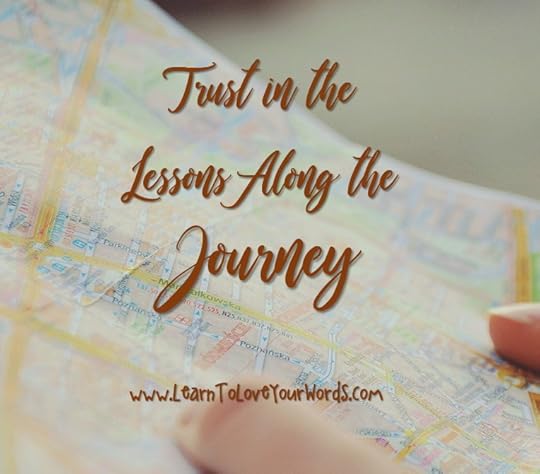
It’s OK to ask for help.
In fact, it’s more than OK, it’s exactly what needs to happen.

The lessons…
We All Need Each Other
This isn’t a pity piece or a cry for help. It’s simply an acknowledgement that we need people around us.
We can’t do it on our own, especially when we are self-employed. And when we are self-employed, getting help doesn’t have to mean paying thousands to consultants to ‘fix problems’ in your business or buying expensive courses with lofty promises.
Sometimes, we just want to talk, and be heard – without being sold to!
Often, it’s the small conversations, the nuggets of wisdom, the words of encouragement, the practical and actionable tips, tools and suggestions we need.
A good day.
Getting a round of applause at the end of a workshop.
A call with a client where you both end up crying with laughter.
The generosity of another business leader on a call, who isn’t there to flog you something, but simply wants to help.
So, my key piece of advice from my lessons in the latter part of 2019
Just ask.
There’s no such thing as a silly question.
Don’t be too afraid of being ‘judged’ to reach out to your network.
Yes, for practical professional changes in your business, you will need to pay for help, but that’s rarely the first step.
The first step is to talk. Be honest. Be open. Be OK with being vulnerable.
Talk first, harness the strength you need from the people around you, then make an informed choice about where to invest in yourself and your business.
And just so you know, I’m here too, even if all you need is to talk it through.
Just ask!
For instant updates when I publish a new blog post, Follow me on Bloglovin’
For extra goodies and exclusive new information, join my mailing list HERE.
The post Lessons From Another Year in Business appeared first on Amy Morse.
December 12, 2019
Gorgeous Greetings – Fortune Is In The Follow Up

It’s that time of year again where we go into retail meltdown – buy all the things, eat all the pies!
Seasons Greetings!

Spending money we don’t have buying things for people who don’t want them…
Above all else, Christmas is about showing gratitude to the people you love and those who have supported you over the year.
In the UK, we don’t have a Thanksgiving, for many of us, Christmas is that time to give thanks.
Greetings Cards
We all like getting cards in the post – it’s one of the few times we get actual old fashioned letters that aren’t bank statements or bills!
However, in the spirit of Thriftmas (having a thrifty Christmas), I’ll be sending eCards to my best clients this year.
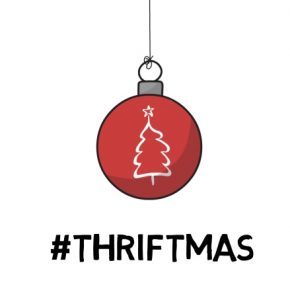
More than a ‘thrifty option’, there’s a serious message. Being thrifty isn’t about being mean or saving money, it’s about being thrifty with the world’s diminishing resources.
I’ve used Paperless Post to create my greetings this year.
Greetings and Options
There are options and templates for pretty much any celebration you can think of (some I’ve never even heard of), or go for a general option, customise it and get creative!
Playing with Ideas
I experimented with several ideas before I settled on my final card.
Many of the options allow you to include your own images.
If you have treasured family pictures you’d like to send out to extended family and friends there are plenty of simple templates. Some more traditional, some contemporary or retro or fun…

There are lots of different designs to suit all tastes and styles.
This was a favourite (I love anything with foxes on!)

I love a retro style Santa, too…

I really like simple, a little quirky…

In the end, I went for the middle one of these, the ‘Mr Rudolf’.
Customisable, Personal Messages
The e-Envelope, the lining, the messages, the background – are all customisable. You can also change the greetings to messages including web links.
I used this option as a way to add a ‘Book a Free Call’ button to the message, so I can get back in touch with the people I’ve helped this year.
It’s too easy in your business to lose track of people.

Including the people that attended workshops, I realised I have helped almost 300 businesses this year!
Of the clients who paid me directly for 1 to 1 help, there were 23.
These are the ones who paid me (many of my workshops are sponsored and therefore free to the participants). They are the 23 people who trusted me enough to part with their own cash. The ones who had faith in me to help them.
They are the ones I don’t want to lose.
The ones I want to continue to help and the holiday season is a perfect excuse to show them my gratitude and offer them more of my time as a thank you.
Who do you want to thank for working with you this year?
For instant updates when I publish a new blog post, Follow me on Bloglovin’
For extra goodies and exclusive new information, join my mailing list HERE.
The post Gorgeous Greetings – Fortune Is In The Follow Up appeared first on Amy Morse.
December 11, 2019
5 Lucrative Businesses for Stay at Home Parents – A Guest Post

The world of work is changing.
Many of the small businesses I work with were started by working mums. Women who need a career and a purpose, while being a mum.
But it’s not only stay at home parents who demand a more flexible approach to their life and work.
I’m not a mum, but the freedom to work when I want to, with who I want to and where I want to is core to the values of Learn To Love Your Words. If I can help others to do the same, to find their voice and pursue their passion, then I’ve done my job!
So, I’m happy to host Heather Redding on the blog.
For those at the start of their self-employed journey, looking to change their focus or look for other income streams to remain sustainable, here are 5 suggestions to consider…
5 Lucrative Businesses for Stay at Home Parents
At one point in time, people generally had to choose between being a stay-at-home parent or having a job.
Today, however, thanks to a growing range of online opportunities, there are more options than ever before for stay-at-home parents to generate an income.

source: pexels.com
While being a stay-at-home parent can be a full-time job in and of itself that may leave little time for anything else, there are plenty of flexible employment opportunities that allow you to fit work around your parenting schedule rather than trying to fit your parenting schedule around work.
Whether you need to support your family just on your income alone or whether you just want to generate some additional income around the holidays or throughout the year, here are five lucrative business opportunities for stay-at-home parents.
1. Direct Sales
Direct sales businesses have been a go-to for stay-at-home parents for several decades now and many home-bound parents have turned them into lucrative empires.
From the early days of Amway and Mary Kay, direct sales businesses have blossomed into offering almost every product under the sun.
Whatever you are passionate about, from wine to cosmetics to jewellery to chocolate to essential oils to health and fitness products, there is more than likely a direct sales company that offers a product you can get wholeheartedly behind.
And if you want to go the old-fashioned, tried and true route, both Mary Kay and Amway are still alive and kicking and doing a booming business.
2. Writing
From resumes to grants to articles to books, there is no shortage of freelance or remote work opportunities for individuals with some good writing skills.
Some writing opportunities can last several months, such as ghostwriting a novel or memoir or grant writing.
Others may only take a few hours, such as writing an article or blog.
Blogging, in and of itself, is also a means towards a lucrative income and you can even use your blog as a portfolio of sorts to attract other writing clients.
Just like starting any business, you may have to slave away for pennies at first but there are many ways to get started building a writing empire.
Sites like Fiverr and Textbroker are both great places to pick up some work quickly, while platforms like Blogger and WordPress are great places to get started writing your own blog.
Being a parent in and of itself is an ongoing learning process and there are millions of parents out there learning right along with you.
Your journey as a parent can even become a great material for a blog.
3. Web Design
The old days when building a website involved knowing a number of different coding languages are long gone.
Today, there is a wide range of hosting sites available that have easy to use templates that allow you to create a completely customized website with little to no coding skills.
DIY drag and drop website builders like Wix, Weebly and SquareSpace are all great places to start. From there, you can move into more challenging areas like specialized eCommerce platforms or self-hosted platforms like WordPress, Joomla! or Drupal.
Web design is a pretty easy skill to teach yourself through simple trial and error and practice.
A good way to get started is simply to find someone who wants a simple website but just doesn’t have the time to build one themselves. You can charge them a small fee for your time, which allows you to get paid as you learn.
When you can deliver a much more complex and challenging site, then you can start charging clients the big bucks.
Until then, set a fee that is commensurate with your current skills and increase your fee as your skillset increases.
4. Virtual Assistant
From customer service reps to virtual receptionists to various types of admin support, there is a growing demand for home-based virtual assistance of all kinds.
From answering phones to creating spreadsheets to performing basic data entry, the sky is virtually the limit to the kinds of work you can do from home.
In some cases, you may actually have a work from home job with set hours or you may prefer the type of assignments where you can simply log in whenever you are available.
Websites like UpWork and Guru are great places to get started, but you can also find a wide range of customer service and virtual assistant jobs on more traditional job sites like Indeed and Glassdoor.
5. Graphic Design
Whether you simply have some mad Photoshop skills or have a more serious background in graphic design, there are a number of ways to turn a hobby or office job into a lucrative home-based business.
If you’re not entirely sure where your skills fall on the marketable spectrum, you can start with a site like 99designs where you compete with other graphic artists for clients.
The benefit of this is that you get feedback from clients that may pass your work over for someone else’s that can help you improve.
If you already have marketable skills and professional background, you might skip right to a site like Toptal or PeoplePerHour.
Making Time for Family
Being a stay at home parent comes with different levels of responsibility for different parents.
Caring for toddlers, for instance, may leave you with much less work time than parents of school-aged children. You may also have more time to devote to work during school months than during the summer.
The beauty of virtual, online and freelance opportunities is that they allow you to work on a schedule that is most convenient for you.
Still, you will have to organize your day well, which can be challenging with the kids around. You can do that by using apps that will help you organize yourself and your family too.
Final Thoughts
Pick up some work during the slow months when the kids are in school and then simply decline opportunities that interfere with the needs of your family.
Not all stay at home parents will need to support their entire family just on their income alone but a great number of freelance and online opportunities make even that a possibility.
Heather Redding is a part-time assistant manager, solopreneur and writer based in Aurora, Illinois. She is also an avid reader and a tech enthusiast. When Heather is not working or writing, she enjoys her Kindle library and a hot coffee. Reach out to her on Twitter.
For instant updates when I publish a new blog post, Follow me on Bloglovin’
For extra goodies and exclusive new information, join my mailing list HERE.
The post 5 Lucrative Businesses for Stay at Home Parents – A Guest Post appeared first on Amy Morse.
December 5, 2019
What Shall I Be When I Grow Up?

I remember something my dad said to me when I was a teenager thinking about which courses to pick, which direction to take… he said, “I still don’t know what I want to be when I grow up.”
That flippant remark has always stuck with me.
It’s a tough question, “What shall I be when I grow up?” – and definitely not one I was equipped, or mature, enough to answer at 16!
I still don’t have an answer! (And probably never will…)
A ‘Thing’
At that age, I didn’t have a thing.
(I still don’t have a thing!)
There wasn’t a subject at school I shone at. I was a B grade average student in most subjects.
A Purpose
There is this romantic idea that we all have a purpose, a thing. A calling.
But how true is that?
Are we putting too much pressure on ourselves, on our kids, to ‘pick one thing’ and stick to it?
What happens if you are interested in lots of topics? If you are naturally curious and creative?
Do you pick one thing then resign yourself to the fact that at some point you’ll get bored of it, then put up with being bored for the rest of your life?
Gone are the days where we train for a job for life. Thank goodness!
I can’t think of anything worse than doing the same things, in the same place, with the same people day in day out until I die!
And there’s the rub…
How do we reconcile this question when we live in such a dynamic and shifting world?
We look for references for comparison in others when we make decisions.
My sister Chloe is the artist, my brother Lewis is the musician, I was the writer. When I was a kid I wanted to grow up to be an author.
In 2013 I did that… I published my first book.
However, it wasn’t all it cracked up to be. While it was a proud achievement, I also realised that writing books, with nothing else, was not for me. The idea of sitting in front of a screen all day, just writing, is horrifying. I’d go insane! Yes, I like writing, but all the time? No thanks!
My siblings, too, wear many other hats, have done many different things. It would be misleading to say that they have dedicated their lives to the pursuit of ‘their thing’ – and so is the case for many of us.
So, now what?
This great TED talk challenges whether we need to even answer that question at all. For someone as young as Emilie Wapnick to realise this is admirable.
What if you don’t have ‘a thing’? – and why that’s OK…
In this TED talk, Emily describes herself as a ‘multipotentialite’.
I must confess, it does annoy me that everyone and everything must be labelled and categorised as if humans can be ordered onto a nice neat spreadsheet! However, if giving something a name to help others better understand your point of view is what it takes, you call yourself a ‘multipotentialite’ or a ‘pluralist‘, ‘scanner’ or a ‘polymath’ if that helps, but you don’t have to live it!
I enjoyed Emily’s reference to 3 ‘superpowers’:
1) Idea Synthesis
Combining two or more ideas and creating something at the intersection allows you to grow in different ways.
This is exactly how I imagine the current business I run and describe it with this Venn Diagram:
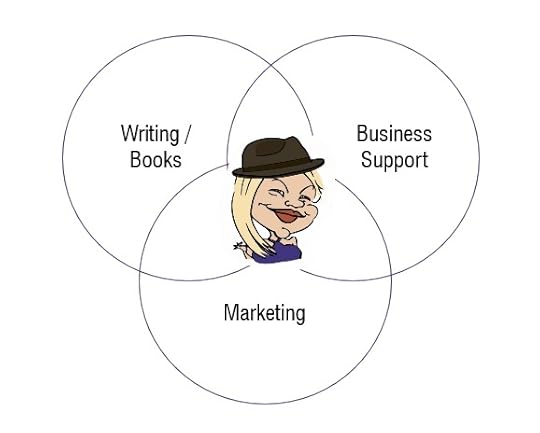
My favourite quote from this talk is:
“Innovation happens at the intersections”

2) Fast Learning
It’s rarely a waste of time to pursue something you are drawn to, even if you end up quitting, being able to assimilate new information quickly is an essential skill to grow your knowledge.
Because whatever it is, you will always learn new skills you can transfer into something else.
It keeps you curious, keeps you mentally agile and keeps you learning throughout your life. Allowing you to grow in different ways.
You can apply the knowledge you acquire along the journey in a different field entirely, one that you couldn’t have anticipated.
3) Adaptability
This is the ability to morph into whatever you need to be in a given situation
Sometimes… this
Sometimes… that

It’s a valuable skill because you can take on various roles, depending on your client’s needs.
We have a lot of complex, multidimensional problems in the world right now, we need more people that can pivot, adapt and think creatively, drawing on all their disparate sources of knowledge.
Because innovation happens at these intersections.
‘Bored Now.’
My husband, Graham, makes fun of me for getting bored so easily. His solution is the sticking plaster of temporary entertainment, like books, colouring pens, notebooks, art supplies etc. All good stuff for a hobby and to pass the time and relax of an evening – but what about having a purpose?
The challenge when you have so many interests is often not so much – ‘pick one thing and stick to it’ – it’s more, “What do I have a go at next? What’s my next journey of discovery?
The other significant challenge is having a big-picture – Deciding, where you want to go? What do you want to do? Who you want to be?
One thing I am certain of is that I don’t ever want to work for anyone else ever again, but what I’ll be doing next year, in three years, in five years… that’s all a work in progress!
Have you ever felt pressure to grow up and find ‘your thing’?
For instant updates when I publish a new blog post, Follow me on Bloglovin’
For extra goodies and exclusive new information, join my mailing list HERE.
The post What Shall I Be When I Grow Up? appeared first on Amy Morse.
November 28, 2019
Breathe New Life into Old Writing
(This is a super short, quick tips post that will take less than 5 minutes to read)
I’ve been blogging for a few years now, one of the things I love about it is that gradual build-up of great value I can share.
Some of my most popular workshops sprung from an idea for a blog post.
The beauty of building up a library of content is that you can use it over and over again in different ways. There are plenty of things you can do to re-purpose, reuse, recycle, rehash, reinvigorate and re-work old writing:
Share it again
Use scheduling tools, such as Hootsuite, to re-share old content. Thursday’s are ‘Throwback Thursday’ so use that popular hashtag to get more eyes on it:
#TBT
#ThrowbackThursday
Change the format
If it was a written piece before, why not turn that old writing it into a video? or an infographic?
Create new images for the post to use in social media updates when you re-share the links.
Rewrite for a new audience
When you first wrote the piece you would have had a particular audience in mind. As your business has evolved, have you got new audiences to cater for?
Re-write and reissue the original post adapted for them, changing the call the action on the post to one that’s appropriate.
Review it for accuracy
Things inevitably change. Your opinion, your knowledge, technology, and input from others.
Create an updated piece of content, referencing the original and adding what’s changed.
I routinely update blogs on how to edit your writing.
Another example is ’round-up posts’ – If you’re written a ‘5 Best TED Talks on X Subject’ in the past, revisit it and add the latest great videos on the topic to the list. Or if you’ve talked about a service and it has changed in some way, revisit it.
Change the headline
Could you update the piece and rename it?
You could also use different headlines for the piece when you share it on social media – ie: schedule in different Tweets for the same content link.
Change the context
This can be a fun one. Try changing the tenses and point of view of an existing piece of content and see how it changes the feel of it.
For example: instead of saying ‘I’ or ‘we’ say ‘you’. Instead of using past tense, use the present tense. Experimenting with your use of language, tense and syntax can really liven things up.
Confession Time…
I originally wrote this article 3 years ago!

What clever things have you done to revive your old writing?
Follow me on Bloglovin’
If you enjoy my blogs, say thank you by topping up the coffee kitty – £2.50 will get me a cappuccino, and you some karmic appreciation 


